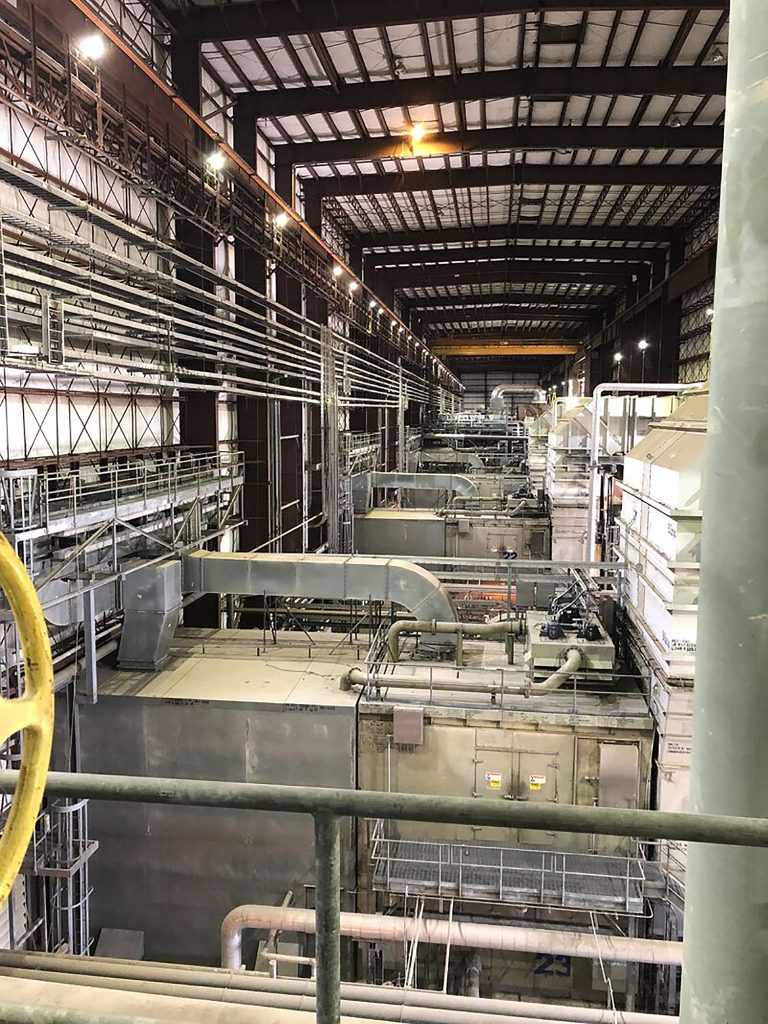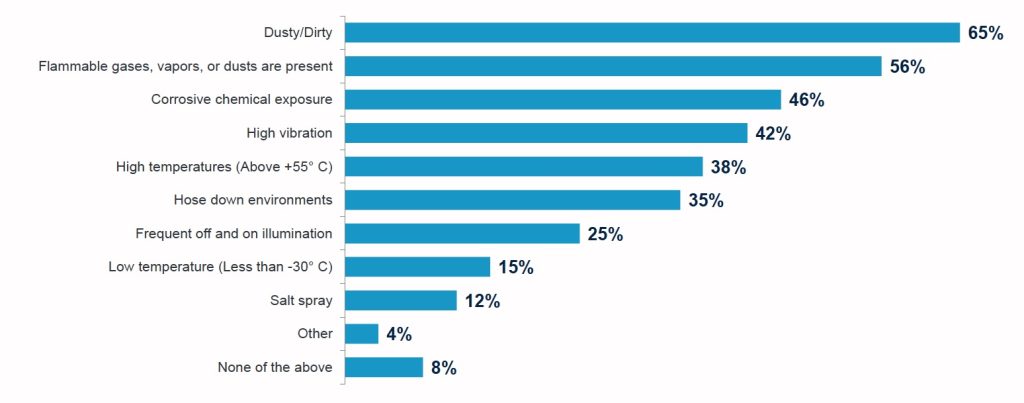HEAVY INDUSTRIAL ENVIRONMENTS such as steel mills, power generation plants, pulp and paper mills, cement production facilities, foundries, mining operations, and shipbuilding yards provide some of the biggest challenges for LED lighting systems. Excessive heat, moisture, vibration, dust and power quality fluctuations caused by harsh production processes can all contribute to premature LED failure, erasing the promised maintenance and safety benefits. These demanding industrial environments deserve only the toughest LED luminaires to deliver superior illumination with unparalleled protection and operate across your facility without incident.

Preventing Accidents
Premature lighting failures or underperforming luminaires due to the adverse effects of wet, harsh locations result in more than downtime — they can lead to very serious accidents to employees and the destruction of equipment. While a multitude of variables can contribute to an industrial accident, inadequate illumination is an often underestimated risk factor. Malfunctioning or dim lighting makes it difficult for employees to detect obstacles, exposing them to common workplace injuries such as slips, collisions, and other similar incidents. Fatigue, eyestrain and drowsiness owing to exposure to glare, shadows or uneven illumination are also contributors to accidents, specifically in situations where precision is required. Poor lighting is responsible for hundreds, if not thousands, of serious injuries each year in areas that could be safely navigated with ease under appropriate lighting conditions. These injuries can be considered negligence with the victim often entitled to damages for injuries, lost time at work, and for pain and suffering.
Environmental Challenges
Reliable, purpose-built, industrial grade lighting is essential to improving operational efficiency, creating a saFer work environment, and reducing maintenance costs. LED luminaires need to perform in environments subject to extreme temperatures, heavy vibration, corrosive atmospheres, electrical disturbances, and dust, often while running 24/7/365.

Extreme High Temperatures
LEDs convert electricity to light directly within the luminaire. They do not radiate heat, but rather retain it so dissipation must be through convection or conduction. Higher local temperatures within the luminaire result, the extent depending on the luminaire design, which can accelerate changes within the LED and in nearby electronic components.
Processing temperatures inside steel mills, glass plants, paper plants and other industrial plants can reach over 4000° F, with ceiling temperatures approaching 65° C (149° F) or greater. When selecting LED luminaires, be aware that an off-the-shelf light duty luminaire designed for a stable heat environment likely will not have the proper heat sinking and high temperature gaskets required for extreme heat installations.
Since electronic components are sensitive to heat, an optimal thermal design can be the determining factor for a product achieving its lifetime claims and avoiding quality issues. LED color shift, driver failures, short circuits, and more can all be tied to poor thermal design.
Facility Conditions

In a recent survey of industrial facility managers by Emerson, respondents reported on the conditions in their buildings that may adversely impact lighting fixture performance.
Corrosive and Wet Atmospheres
Exposure to caustic chemicals and solvents, adverse weather, salt water, and moisture will corrode unprotected luminaires, leading to premature failure. Almost 50% of all electric, electronic and mechanical component failures are caused by corrosion. The World Corrosion Organization estimates the worldwide annual cost of corrosion at $2.2 trillion, more than 3 percent of global GDP.
Part 2 of this article from Emerson will conclude in the July issue of Electrical Products & Solutions magazine.




